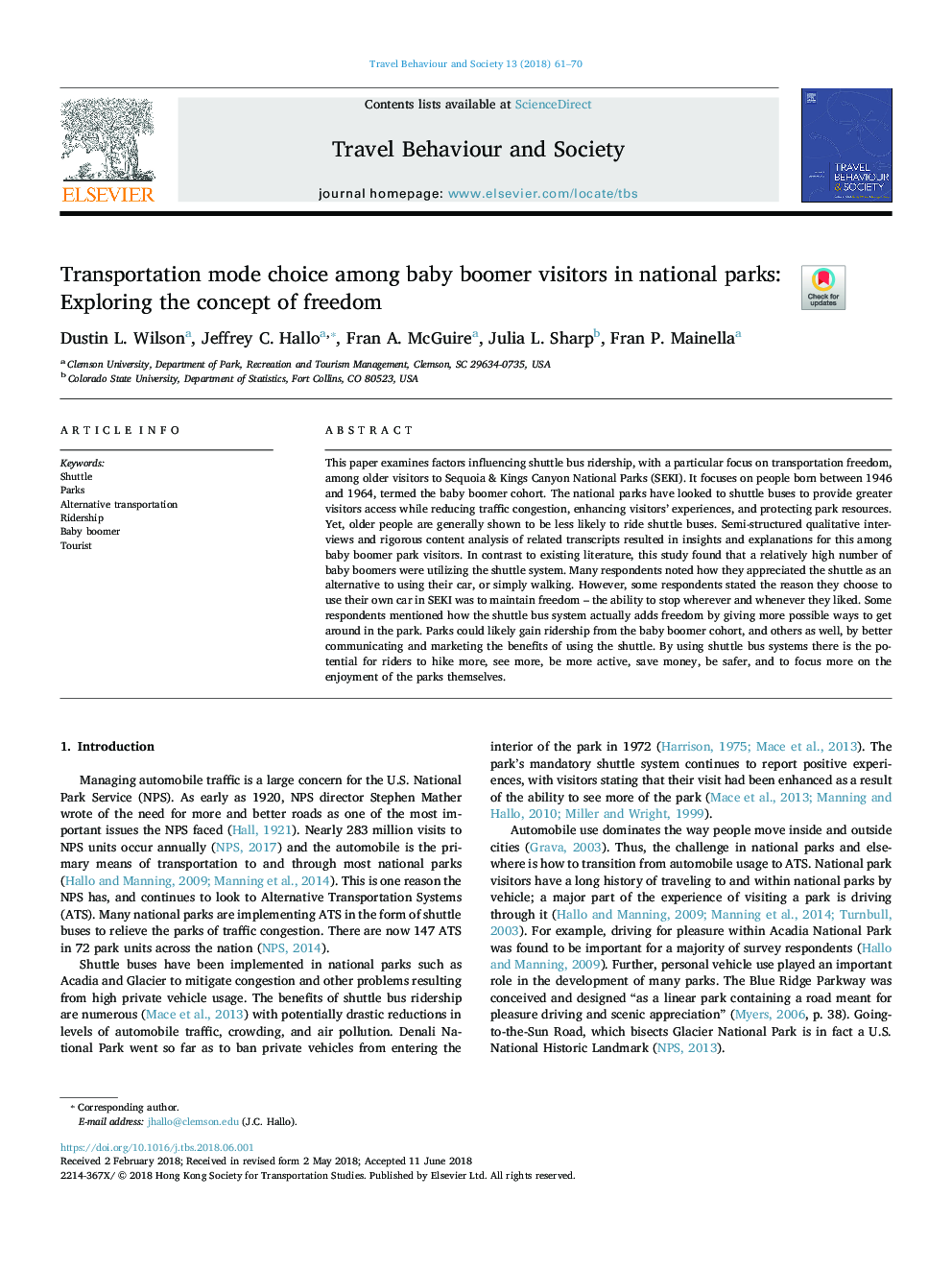| Article ID | Journal | Published Year | Pages | File Type |
|---|---|---|---|---|
| 6576245 | Travel Behaviour and Society | 2018 | 10 Pages |
Abstract
This paper examines factors influencing shuttle bus ridership, with a particular focus on transportation freedom, among older visitors to Sequoia & Kings Canyon National Parks (SEKI). It focuses on people born between 1946 and 1964, termed the baby boomer cohort. The national parks have looked to shuttle buses to provide greater visitors access while reducing traffic congestion, enhancing visitors' experiences, and protecting park resources. Yet, older people are generally shown to be less likely to ride shuttle buses. Semi-structured qualitative interviews and rigorous content analysis of related transcripts resulted in insights and explanations for this among baby boomer park visitors. In contrast to existing literature, this study found that a relatively high number of baby boomers were utilizing the shuttle system. Many respondents noted how they appreciated the shuttle as an alternative to using their car, or simply walking. However, some respondents stated the reason they choose to use their own car in SEKI was to maintain freedom - the ability to stop wherever and whenever they liked. Some respondents mentioned how the shuttle bus system actually adds freedom by giving more possible ways to get around in the park. Parks could likely gain ridership from the baby boomer cohort, and others as well, by better communicating and marketing the benefits of using the shuttle. By using shuttle bus systems there is the potential for riders to hike more, see more, be more active, save money, be safer, and to focus more on the enjoyment of the parks themselves.
Related Topics
Life Sciences
Environmental Science
Management, Monitoring, Policy and Law
Authors
Dustin L. Wilson, Jeffrey C. Hallo, Fran A. McGuire, Julia L. Sharp, Fran P. Mainella,
